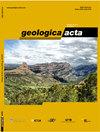罗马城市Lixus(摩洛哥西北部)的建筑石材:来源、岩石学和岩石物理特征
IF 2
4区 地球科学
Q2 GEOLOGY
引用次数: 6
摘要
建筑材料的特性是评估考古遗址退化过程和改进潜在修复工作的关键工具。本文的目的是通过岩石学和岩石物理技术鉴定和表征罗马城市Lixus (Larache,摩洛哥)建筑中使用的最重要的建筑石材。根据遗迹的目视分析,确定了三种主要的建筑岩石类型:渐新统砂岩、第四纪砂岩和第四纪砾岩。通过对区域地质和开采标志的分析,确定了这三种岩型在雷克苏斯周围生长,并确定了可能起源于罗马的采石场。渐新世砂岩是Lixus的主要建筑石材,因为它在Tchemmis山上形成并广泛生长,而城市就坐落在Tchemmis山上。第四纪砂岩和砾岩,代表近岸沉积物和风成岩,沿着大西洋海岸出现,在那里它们形成了拉腊切附近悬崖的一部分。岩石学结果表明,不同类型的岩石在粒度、碎屑与异源化学成分的比例以及孔隙系统的形态等方面存在显著差异。力学分析表明,渐新统砂岩比第四纪砂岩和砾岩具有更强的抗压能力,第四纪砂岩和砾岩的抗压强度相对较低。渐新统砂岩的孔隙度和渗透率都很低,其吸水和解吸程度都很低,这可能是由于孔隙网络连通性差造成的。与后一种岩型相反,第四纪砂岩具有非常高的孔隙度和渗透率,表现出高度吸水和解吸的水行为。这是由于与这种岩型的孔隙度相比,胶结程度较低,而且多孔网络的连通性很好。渐新统和第四纪砂岩经人工加速老化试验后,均未表现出明显的重量损失,表明两者均受到盐结晶和可能的冰形成的轻微影响。结果表明,雷克苏斯地区建筑岩石保存较好,与矿物学和岩石物理特征等内在因素以及研究区气候条件的有利作用有关。本文章由计算机程序翻译,如有差异,请以英文原文为准。
The building stone of the Roman city of Lixus (NW Morocco): provenance, petrography and petrophysical characterization
The characterization of building materials is a key tool to assess deterioration processes and improve potential restoration works of archaeological sites. The aim of this paper is to identify and characterize the most important building stones used in the construction of the Roman city of Lixus (Larache, Morocco) by means of petrographic and petrophysical techniques. Based on the visual analysis of the monuments, three major building stones (i.e. lithotypes) have been identified: i) Oligocene sandstones, ii) Quaternary sandstones and iii) Quaternary conglomerates. Based on the analysis of the regional geology and exploitation marks, these three lithotypes have been recognised to crop out in the surroundings of Lixus and the quarries, presumably Roman in origin, recognized. The Oligocene sandstone is the primary building stone in Lixus as it forms and crops out extensively in the Tchemmis hill, at the top of which the city is settled. The Quaternary sandstones and conglomerates, which represent nearshore deposits and eolianites, crop out along the Atlantic coast where they form part of the cliffs next to Larache. Petrographic results indicate that lithotypes differ notably in grain size, ratio of detrital to allochemical components, and the configuration of their porous system. Mechanical analysis shows that the Oligocene sandstones are more resistant to compression than the Quaternary sandstones and conglomerates, the latter exhibiting relatively low compressive strength. The Oligocene sandstones, which display scarce porosity and permeability, show a hydric behaviour characterized by a very low degree of absorption and desorption water, likely resulting from a poor connectivity of the pore network. Contrary to the latter lithotype, the Quaternary sandstones, which exhibit very high porosity and permeability, display a hydric behaviour characterized by high degree of both absorption and desorption of water. This is attributed to the low degree of cementation compared to porosity of this lithotype and the excellent connectivity of the porous network. Finally, Oligocene and Quaternary sandstones do not show a significant weight loss after the accelerated artificial aging test, indicating that both are slightly affected by salt crystallization and presumably ice formation. Results indicate that the relatively fine state of conservation of the building rocks of Lixus is linked to intrinsic factors such as mineralogy and petrophysical characteristics together with the favourable effect of the climatic condition of the study area.
求助全文
通过发布文献求助,成功后即可免费获取论文全文。
去求助
来源期刊

Geologica Acta
地学-地质学
CiteScore
2.50
自引率
6.70%
发文量
13
审稿时长
>12 weeks
期刊介绍:
- Relevant conceptual developments in any area of the Earth Sciences.
- Studies presenting regional synthesis.
- Thematic issues or monographic volumes presenting the results from one or more research groups.
- Short papers reflecting interesting results or works in progress.
- Contributions and results from Research Projects, Workshops, Symposiums, Congresses and any relevant scientific activity related to Earth Sciences.
- Geologica Acta aims to stimulate rapid diffusion of results and efficient exchange of ideas between the widespread communities of Earth Science researchers (with special emphasis on Latinamerica, the Caribbean, Europe, the Mediterranean
 求助内容:
求助内容: 应助结果提醒方式:
应助结果提醒方式:


